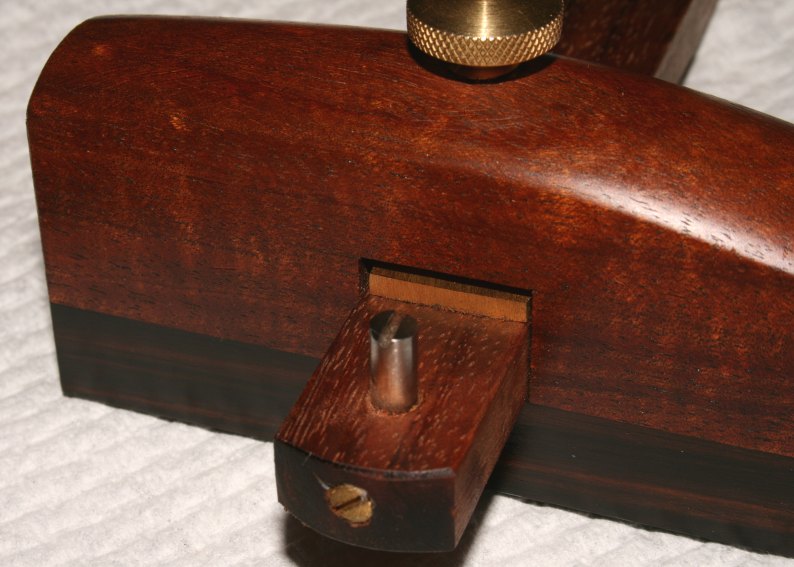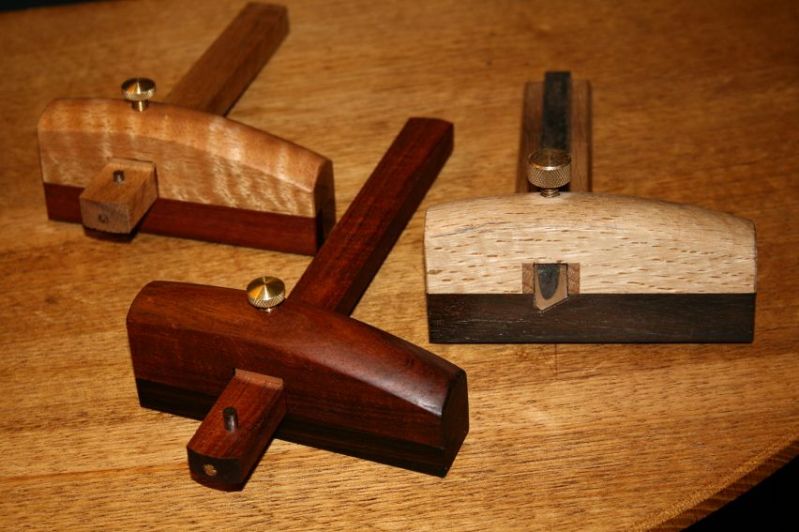… Firstly, that the knob is on the top where it is easy to adjust while holding the gauge in one hand (and the other hand is for the work piece). It also needs to be a round knurled knob, not a thumbscrew (which may be easier to grip but is not as easy to adjust with fingertips).
… Secondly, the hand needs to wrap around the front so that the grip is firm as you pull the gauge backwards/towards yourself. This requires that the profile of the fence is lower under the heel of the hand, and that there is a grip area for the fingers.
I think the Kinshiro rocks. It incorporates all these features.
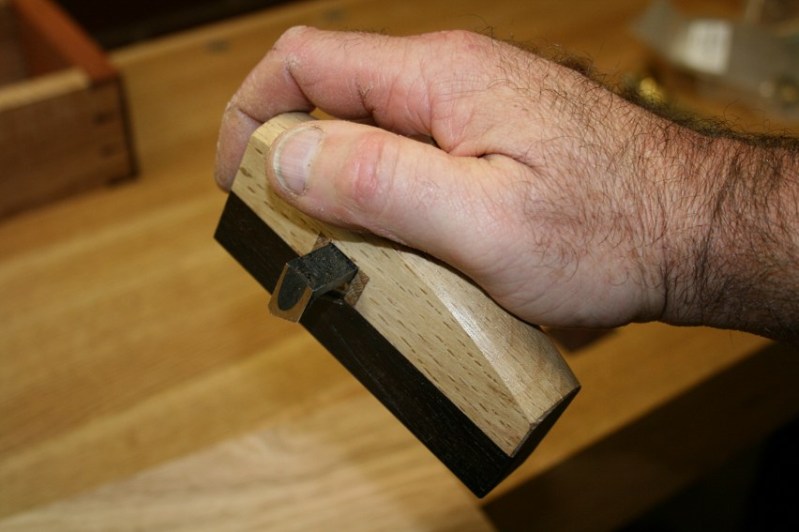
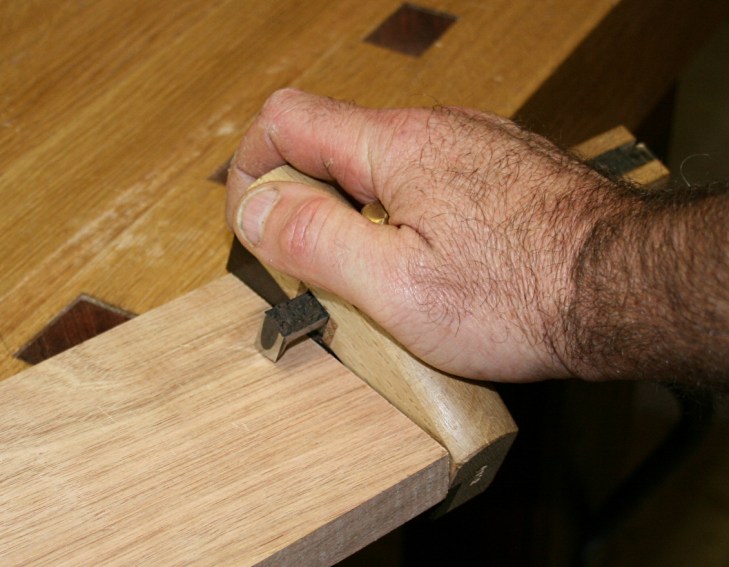
This Kinshiro functions as a wonderful cutting gauge for marking dovetails. It is, however, a mortice gauge.
I had the afternoon free and only just managed to get these done as Lynndy was threatening to shoot me if I did not come in for dinner! So the photos are not the best.
These cutting gauges are modelled on the Kinshiro. They are a little more compact since they have single cutters.
The Curly Myrtle gauge on the right has a Jarrah wear strip. The photo does not do the timber justice. It is difficult to see the curl here. The other gauge is Tasmanian Blackwood with an Ebony wear strip. Its chatoyance is simply amazing.
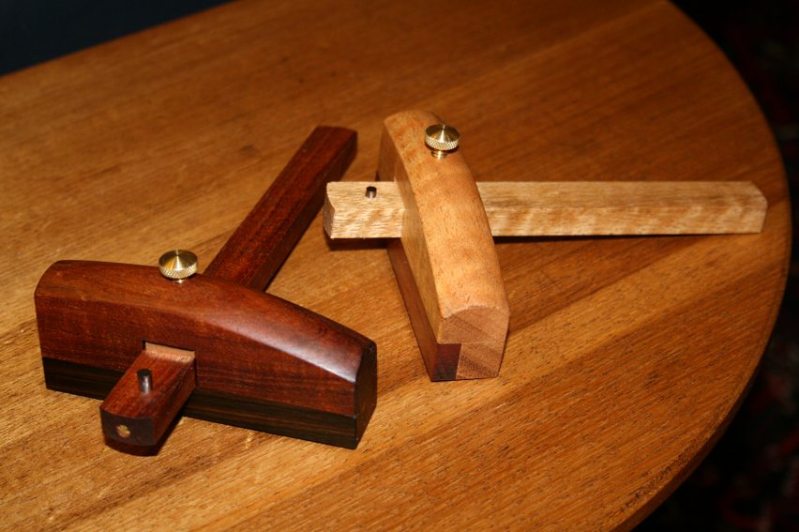
Tasmanian Blackwood is by far my favourite wood.
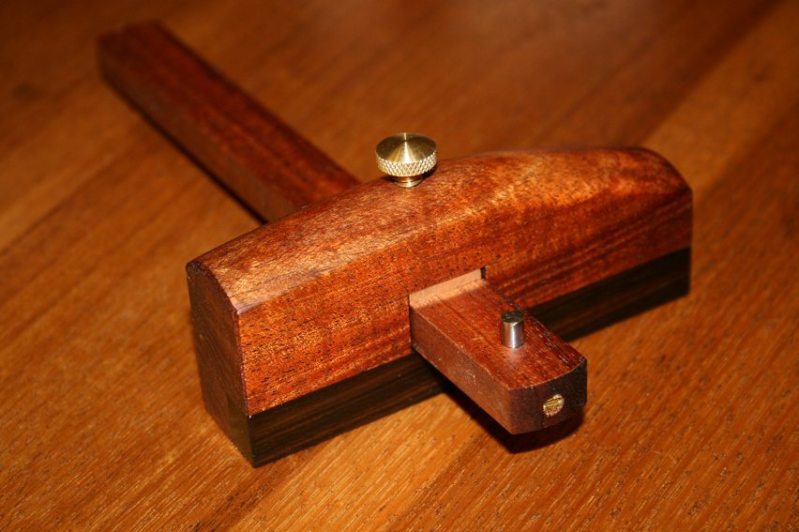

The beam is locked via a captive brass plate ...

This is the mechanism I made ..
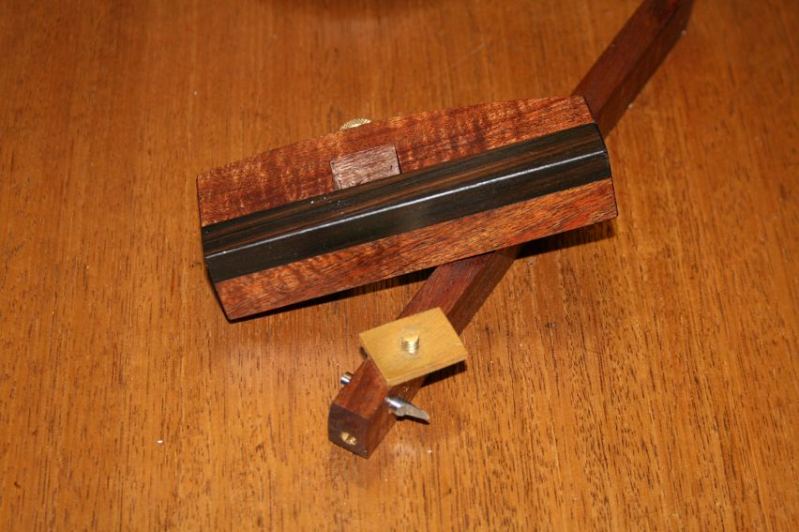
It is simply a brass plate that I drilled for a screw. The hole on the plate is chamfered, and the screw head fits fairly flush. Excess is filed off. The screw is left as a stub.
The stub fits into the hole for the adjusting screw (so it is now captive), and the adjusting screw presses down on the stub for pressure.
The cutter is a knife shaped from a 3/16" diameter HSS rod ...

